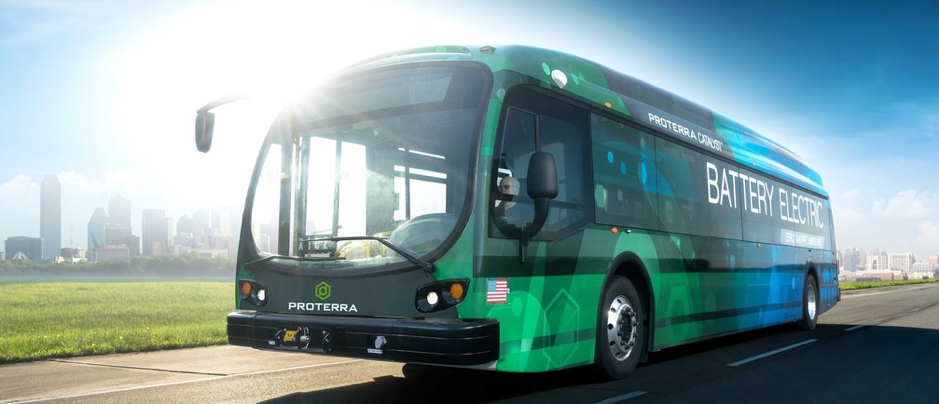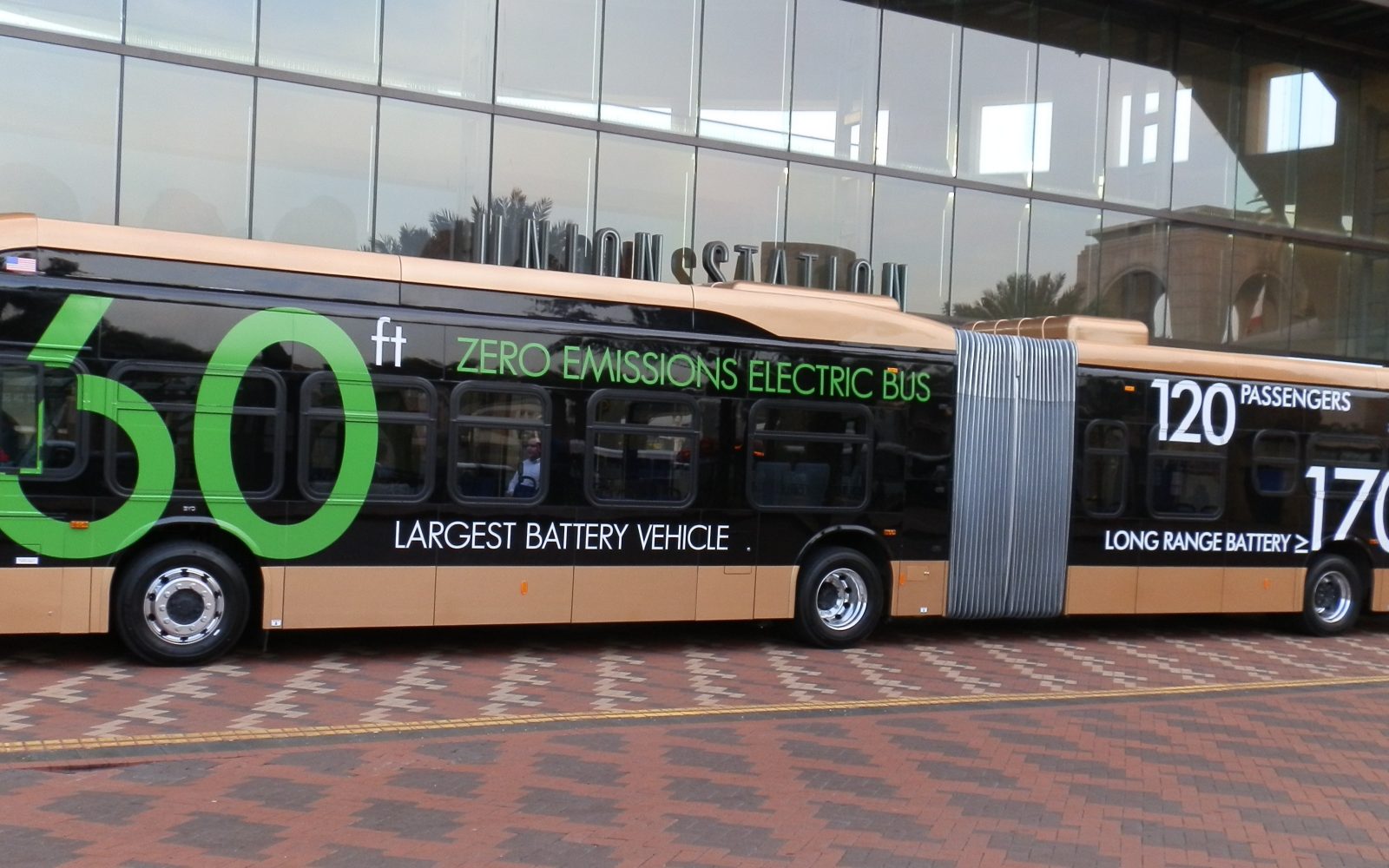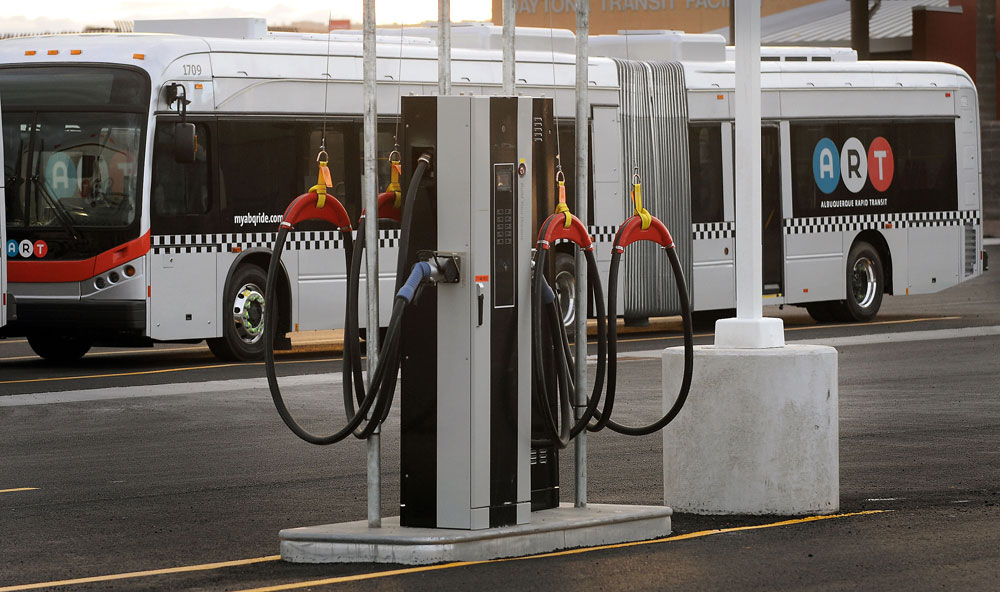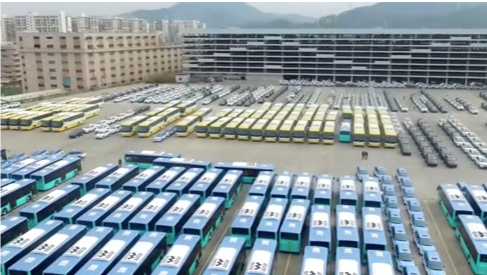Electric Buses: Money Drives

With some European nations setting ambitious goals to switch all their buses to electric vehicles by 2030, it is no surprise that there are 2,250 vehicles in Europe while the United States only has 300. By no means, however, can it compare to the staggering amount of 421,000 buses in China. According to Bloomberg, at end of 2018, 99.7% of the world’s electric buses (e-buses) were in China, which begs the question: why hasn’t the rest of the world adopted electric buses at such a scale too?
To investigate this issue, one must first understand the two major factors that impede utilizing electric buses for mass transportation: limited ranges due to environmental or technological circumstances and steep pricing. In varying hot or cold environments, electric vehicles experience decreased ranges as their batteries have to use more reactants produce the same current in these extreme conditions. A paper by the American Automotive Association asserted that this decreased efficiency can lower the range up to 40% for cold and 17% for hot weather. Moreover, electric buses can cost up to twice or four times that of a conventional diesel or combustion engine bus. In addition to this high upfront investment, these vehicles also require an extensive network of charging stations to offset their short ranges. While reduced emissions, fuel costs, and cost of ownership in the long-term offsets these disadvantages, these two factors remain a large obstacle for change.

In the United States, a lack of straightforward government policies clashes with pricing. As Nick Albanese, a New York-based analyst at BNEF says, “there’s no industrial policy in the U.S. for e-buses.” According to Bloomberg, this lack of drive has compounded with the funding mechanisms of public transportation, which tends to lean towards costs efficiency rather than environmental concerns. Hanjiro Ambrose, a Ph.D. candidate at U.C. Davis, comments on this situation, saying “The cheapest technology available isn’t usually the newest technology available.” Other factors include difficulties to integrate electric vehicles due to their ranges. The city of Albuquerque, for example, sent back its electric buses in 2018 and sued its supplier BYD as the buses could not reach 275 miles for a single charge. As the mayor Tim Keller states, “There’s no option for electric. We’ll go with a version of clean diesel or gas, then we’ll look to phase in electric once the technology catches up.”
In Europe, a similar story occurs. Although many cities have set goals, established bureaucracies impede the purchasing of pricy infrastructure and cars. Most cities cannot afford the upfront costs alone and must rely on regional or national funding in order to establish the necessary infrastructure and purchase vehicles. Even if they do acquire funds, change is often negligible. For example, London’s plan to introduce 240 e-buses by the end of 2019 only converts 2.9% of its total number of buses to electric.

China has managed to circumvent both factors with strong policies and subsidies. By greatly subsidizing vehicles at the state and city level, each city only has to pay less than half of the price of each bus! This effectively allows cities to purchase twice the amount of buses to compensate for their limited range. Additionally, policies push for the implementation of such vehicles and foster competition between cities to vie for the most successful implementation of these new transportation systems. These elements ensure that cities lay down the proper infrastructure for EV buses to support their fleet. In one case, China established a myriad of charging piles, up to 40,000 in the city of Shenzhen. The fast implementation, however, comes with a hefty price tag. As South China Morning Posts claims, the fleet of 16,000 in Shenzhen costs the government CN¥8 billion (US$1.15 billion) per year to run. Seen from an additional $81,000 in grants, subsidies and tax benefits per electric bus purchase, China is investing serious money to enlarge its electric bus transportation system.

As the Chinese electric bus market saturates, however, electric bus manufacturers have sought ways to exploit overseas markets. Conjoined with innovated technology, electric buses are still finding themselves driving into American and European cities. One of the more recent implementations, for example, by public transport company Indygo in Indianapolis, Indiana plans to place a total of thirty-one BYD K11 electric buses on the road by September. Currently, the city has thirteen electric buses from BYD delivered on May 31st, 2019. To overcome e-buses’ short ranges, the company has promised to introduce charging stations to supplement the vehicles. Right now, Indygo is collaborating with Philadelphia-based Momentum Dynamics to install this system. Boasting wireless charging technology, this project would have vehicles with ranges up to 500km. With a price tag of US$96.3 million funded by a US$75 million grant, though, this Indianapolis bus fleet may have just encapsulated the European and American methods to structure new transportation systems.
Popular List
Uber Elevate Pt.1: The Background
Uber first took the transport industry by storm when they began operations in 2010 and now the company aims to drop another bombshell on the industry as it plans to launch its own air taxi service, Uber Elevate, as early as 2023.
Why Electric Bikes will outsell Electric cars within this decade
The concept of an electric bike (E bike) may be not so familiar, however it has existed for a long time with first models of the E bike dating back to the late 19th century. In Asian countries like Taipei and European countries such as Netherlands, E bikes are more popular than traditional bikes. In the Netherlands, E bikes make up 68% of the total sales of all bikes, compared with only 4% in the US. E bikes are more attractive than ever, in fact predictions go as far as saying that E bikes would outsell electronic cars within the next decade.
Crash Course to Autonomous Driving Pt. 4 (ft Baidu)
This year Baidu announced a reshuffling of its driving business, most notably the creation of the V2X (Vehicle-to-Everything) department. With the backing of the Chinese government, this move aims to establish China as the world leader in driver-less automobiles.
Beijing announces Robotaxis- China's big move for the future.
Recently, the Beijing city government announced that the city will allow firms to test their Robotaxi service within the city. Despite multiple cities giving the green light to Robotaxis, Beijing will become the first city in China to have detailed legislation regarding insurance and coverage, making Beijing the front runner to have a fully functional Robotaxi fleet in China.
NIO layoffs- A sign of Future Uncertainty ?
Following the announcement of a partnership with Mobileye, Intel’s autonomous driving wing. The Chinese EV startup NIO has cut a further 141 jobs in the US, their third round of layoffs this year. Most of the layoffs are from the company’s autonomous driving department, understandable considering the partnership will most likely result in the duplication of roles.
Five most exciting automotive headlines during CES 2020
The global stage for innovation once again showcased a handful of great Automotive announcements . As the Consumer Electronics Show (CES) 2020 draws to a close, we look back at the most exciting announcements.
Why Mercedes is smart to postpone electric car launch in the US
Mercedes- Benz announced its first mass market electronic SUV known as the EQC in 2019. Earlier last year, the vehicle was launched in Europe. However, the company has postponed the vehicle’s launch in the US from 2020 and 2021. The company claimed that they want to focus on the growing demand of the vehicle in its European market, yet there is much more under the hood.
Crash Course to Autonomous Driving (Pt. 3 Waymo)
Currently, most if not all automobile manufacturers have invested or had an interest in the autonomous driving sector. Although Big Tech corporations like Amazon and traditional OEMs like General Motors have been encroaching this field, it hasn’t always been this way. The current leader on the market Waymo kickstarted the buzz around it. One of the earliest autonomous driving projects in the US, the corporation was set up by the forefathers of today’s self-driving technology. That advantage directly translated to significant technological benefits that the company leveraged. Their early use of machine learning, 3D mapping with LIDAR, and GPS in their vehicles boosted their ability to test their devices beyond their competitors at the time.
Crash Course to Autonomous Driving (Pt. 2 Classifications)
From our last article, one can easily see that self-driving vehicles have been developing for quite a while. The classifications of such cars, on the other hand, may not be as clear. Right after the boom in interest in autonomous driving, the Society of Automotive Engineers (SAE) sought to develop standards for measuring the levels of autonomy. In so, they defined six categories of autonomous vehicles ranging from Level 0 to Level 6.
A Crash Course to Autonomous Driving (Part 1)
In this Information Age, the swarm of news almost blinds us. The recent buzz around autonomous driving in the past two years have proved just that. While it is easy to imagine the applications of such technology, the classes and utilization of these machines leave many baffled. In this short article, we will toss you into a crash course to understanding autonomous driving.
Three Recent Advancements in Fuel Cells Suggest Economic Breakthrough
It’s an exciting time to be a hydrogen fuel cell enthusiast. Hydrogen fuel cells have undertaken a considerable technological leap. With a myriad of papers published in 2019, it may be hard to scroll through all of them. This article will select three that stood out and delve into their potential implications. Ranging from fuel cell material to economic advancements, these papers depict cutting edge fuel cell technology.
Five Applications of Fuel Cells in Industry
On June 11th, an Uno-X hydrogen refueling station exploded in Bærum, Norway. While no one was hurt directly by the blast, the company has shut down more than 10 stations throughout Europe as a result. This incident, which echoed a similar event in Santa Clara this earlier June, may delay the propagation of hydrogen fuel cell vehicles (FCVs). Toyota and Nissan, for example, have paused sales for their fuel cell vehicle cars for the time being. These setbacks for commercial FCVs, however, do not reflect the whole picture on the fuel cell development. Industrial use of FCVs has been flourishing under the radar for quite a while.
Governments Change Attitude Towards Big Tech
If you walked around the Caltrain stop in San Francisco, a huge billboard shouts “BREAK UP BIG TECH” at you. Sponsored by Senator Elizabeth Warren, this advertisement is only one of the most recent cases of governmental lash backs against giant tech companies generalized as “Big Tech.” Joined by Donald Trump, Bernie Sanders, and even Facebook co-founder Chris Hughes in this perspective, Warren’s ideas may signify more than a presidential campaign bid to acquire more electoral votes.
Huawei Hit Hard by Ban, Causing Global Ripples
On May 15th of 2019, Washington announced that the United States would place Huawei on the Entity List. Different from the last ban on ZTE, which was supposed to last for seven years, being on the entity list has no definite ending. To trade with US companies, Huawei has to apply each case to the government for permission, whose approval will be near impossible to acquire. With 1,200 suppliers in the US, this ban means much more than losing the US market.
A Look at Tiktok from Bytedance - the one who made it in the West
Tiktok is the most recent social media phenomenon that has taken the world by storm. It currently has over 500 million monthly active users globally, and retained its No.1 position as the most downloaded app on Apple App store for the fifth consecutive quarter, beating youtube, instagram, whatsApp and Messenger. It bears a vague resemblance to Vine, the 6-second video app that was acquired by twitter and eventually shut down in 2017.
Our roundup for MWC19: Hololens, exciting new phone concepts and more...
The Mobile World Congress has grown to be a major calendar event for Tech and Telco enthusiasts alike with well over 100,000 attendees descending on Barcelona in recent years. 2019 was no different and as the show finishes up today, we took a look at the most exciting things to catch our eye this week.
CES 2019: VR/AR updates
The recently wrapped CES in Las Vegas had a lot of to offer other than phones, watches, and tablets. The interest in VR/AR has spurred constant innovation, and there’s a lot to be excited about. Here are the most interesting things we saw.
Autonomous Vehicles - Sooner or Later ?
Its been a few years since the concept of autonomous vehicles began being talked about as a feasible reality. However there are conflicting views as to how long it could actual take before self-driving cars go mainstream. Meanwhile carmakers are doubling down to push for a passenger vehicle with some level of autonomy or an elaborate demonstrative fleet for autonomous taxis.
UNCERTAIN BREXIT FUTURE WEIGH HEAVY ON UK AUTO INDUSTRY
The ongoing arguments on Brexit has started to impact UK’s automotive industry as carmakers prepare for a “no deal” outcome.
Why Companies Should Invest In Talent Management Solutions
Talent management plays an important role in the recruitment, development and retention of talented employees for most organisations. For companies this means that talent management must be the business strategy as it includes one of the most important assets for the business – it’s people.
Leveraging The Latest Recruitment Technology Trends For Recruiters
Candidates are the driving force in today's recruitment industry. It is an ongoing struggle to qualify and retain top talent from the pool of under-qualified applicants. The way HR approaches recruiting is evolving facing the mix of cloud based apps, social media, AI and disruptive digital tech that have a huge effect on the the way we communicate today.
The Rise of Chinese Innovators : from R&C to R&D
Historically people have viewed Chinese companies as incredibly talented imitators, or in a more simple term, copy-cats. Benefiting from a strong economy,
AI in China - the next frontier in the battle for tech dominance ?
The Chinese government has recently nominated its best technology companies to accelerate the country towards global AI dominance. The Ministry of Science and Technology in China identified local giants Baidu, Alibaba Group and Tencent Holdings - BAT, as well as iFlytek, the voice-intelligence specialist as the first group of companies to form a “national team” to lead the AI movement in China, with an end goal of being a global leader in AI by 2030.
Your future taxi will be run by Automakers and Tech companies !
The traditional taxi industry is slowly being replaced by automakers and tech giants looking for a quick way to monetize self-driving technology. Uber, who have often come in for criticism from the traditional Taxi industry recently mend their relationship with the largest local cab company in Singapore.
The Latest Developments in Mobility - on the Ground and in the Air
While it may be fair to say Tesla kickstarted a genuine consumer interest in EV, many established automakers announced plans for EV offerings with the timelines near the end of this decade.
The End of Automotive as we know it...
Bob Lutz, the former vice chairman of General Motors has very recently predicted the future of automotive industry - that it has no future. “It saddens me to say it, but we are approaching the end of the automotive era.” Bob says. “The end state will be the fully autonomous module with no capability for the driver to exercise command...You will call for it, it will arrive at your location, you’ll get in, input your destination and go to the freeway".
Two recent Smart City projects at opposite ends of the World
The ambition of today’s smart city projects often leave a significant gap between concept and execution. Telecommunication carriers are busy at work building 5G infrastructure. The automotive industry is working on autonomous vehicle and the related V2X technology of vehicle to infrastructure communication. Meanwhile City officials are pushing for regulatory reforms in the light of the inevitable data-centric Smart City of the future.
East Vs West in the the driverless race
The race in autonomous vehicle development continues to speed up! The concept of AV has become a case of “when” rather than “if” and here are the latest updates from the industry on the autonomous vehicles.
The Rise of the Robots
With the rise and rise of Artificial Intelligence and Machine Learning, a Sci-Fi style robotic world as depicted in ‘The Terminator’ films of the 80’s and 90’s has pulled focus. With everyone from national labs and small startups quietly working on them, a total of USD $18.8 billion was spent on robotics M&A alone on H1 last year. Here’s some of the developments in the robotic world.
